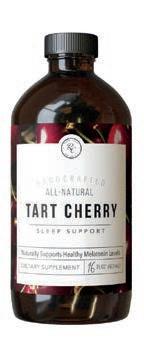Wellness HEALTH































































































Many people lament having tired, achy feet. That’s especially so among women who routinely squeeze into uncomfortable shoes in the name of fashion.
Feet carry the weight of the entire body while a person is upright. That can mean hours of enduring pressure from walking or standing.
The Pedorthic Association of Canada says that, when a person stands, the same muscles in the feet fire repeatedly as the pressure on them remains constant. This differs from when one walks about and the pressure shifts to and from different areas of the foot so the same muscles aren’t working all the time. That is why feet may not ache as much after walking as they do after long periods of standing still.
These factors may be exacerbated by wearing uncomfortable shoes or high heels. Heels position the foot to point the toes downwards, which can put stress on the balls of the feet and also on the toes. Stress fractures of the metatarsal bones can occur if the strain is great enough. Pain also may extend into the knees and lower back.
These foot-pampering steps can help women take care of their feet.
• Wear supportive shoes. Podiatrists state that foot and heel pain is a common byproduct of plantar fasciitis, which is a stabbing pain felt under the soft part of the foot and around the heel. Proper arch support can relieve such pain. Supportive shoes or custom insoles can provide ample support to the arches.
• Stretch your feet. Regularly stretching the feet or practicing yoga can help alleviate tight muscles in the feet and around the ankles that can contribute to discomfort.
• Skip the flip-flops. We know that flip-flops are the ultimate warm-weather footwear, but the lack of support such footwear offers can lead to pain. Furthermore, trying to keep the flip-flops on by “toe scrunching” can trigger tendinitis, offers the custom shoe insole company Wiivv. Opt for more supportive and secure sandals.
• Soak and massage feet. Epsom salt soaks are great for dealing with muscle aches and reducing inflammation. After the soak, rub on an essential oil moisturizer and either massage your feet or ask a partner to do so. Don a pair of cotton socks to let the oils penetrate and moisturize the feet.
• Don’t walk barefoot. Walking barefoot on hard surfaces, even indoors at home, can lead the

foot to collapse. This can lead to a tremendous amount of stress on the foot and the rest of the body, advises Dr. Miguel Cunha, a podiatrist and the founder of Gotham Footcare in New York. Going barefoot also exposes the feet to bacteria and fungi that can infect the skin.
Women who are concerned about the health of their feet and any feelings of discomfort in their feet should speak with a podiatrist.
Are you noticing your feet constantly aching? It may be time to see a podiatrist. Give Jonathan Kletz, D.P.M at Texas Foot Works a call at (903) 887-4341 or (903) 677-9090.


· Choose comfortable & supportive shoes.
· Get the right fit.
· Compression socks.
· Alternate footwear.
· Skip the flip-flops.
· Stretch your feet.
· Get a massage.









































Most people know that routine exercise does a body good. While it may not require a degree from medical school to know that exercise can be a great way to lose weight and reduce risk for various illnesses, there’s even more beneficial side effects of regular exercise that might surprise even the most ardent fitness enthusiasts.




• Exercise produces positive psychological benefits. WebMD notes that there are several psychological benefits of routine exercise. Those benefits occur because exercise triggers the release of endorphins, which are hormones that interact with receptors in the brain that reduce a person’s perception of pain. Some additional psychological benefits of exercise include stress reduction and prevention of anxiety and depression.



• Exercise can improve your social life. WebMD also notes that routine exercise can improve self-esteem, which can make it easier for people to connect with others. A 2017 study published





















































in the Journal of Sports Economics concluded that participation in sports activities can induce prosocial behaviors. Though participation in sports is often promoted as a great way for kids to make new friends, the social aspect of exercise and sports participation is no less beneficial for adults.
















• Exercise can benefit long-term cognitive health. Though the reasons remain unclear, there seems to be a link between regular physical activity and long-term cognitive health. A 2017 study published in the Journal of Alzheimer’s Disease found that regular exercise can positively influence cognitive ability, reduce the rate of cognitive aging and lower the risk for certain dementias, including Alzheimer’s disease.



Many people feel a significant sense of accomplishment by the end of a vigorous workout. Such feelings could grow even more profound when individuals recognize the many lesser known benefits of breaking a sweat.














Integrative & Functional Wellness Programs, Nutrition, Weight Loss, Personal Growth & Development Workshops, Wellness Retreats, and Customized Products


Transformational Life Quest Retreats now available in East Texas



include access to a variety of life-enhancing workshops and activities that reduce stress, increase mental focus, revive your senses, and strengthen your overall well-being…and of course, golf.

Dr. Carla Russo PhD., ND, MSc., RYT
To learn more, please visit ZWAretreats.com

 Zen Wellness Villa Retreats at Pinnacle Golf Club
Zen Wellness Villa Retreats at Pinnacle Golf Club
“I see inherent goodness, resilience, and wholeness in each individual I work with. I know that when people are allowed to express their unique significance and gifts in the most joyful, passionate, and fulfilling way, they achieve ever-expanding success and prosperity in all areas of their lives.
When individuals act from a unique sense of purpose, fueled by passion, I see them collaborating with others in mutually respectful and loving relationships to artfully create a world of magnificent abundance. I see them creating resilient and sustainable passion-based families, businesses, and communities around the globe.
As a Quantum Transformational Life Coach and Wellness Retreat Facilitator, I believe we must live in our truth and integrity, connect from our hearts and use tools that will move us from obstacles to a new framework of abundance and success.” —Dr. Carla

Dr. Russo’s research in servant leadership led her to discover the core principles that are fundamental to the creation of high-performing enlightened individuals and teams. Through coaching and speaking, she helps individuals and groups recognize that an enlightened and enlivened mindset and teamwork accelerate their path to greater success, contribution, and purposeful fulfillment.
Dr. Russo is the Founder and CEO of Zen Wellness Academy wherein she marries her depth of wisdom and insight with passion, humor, and sensitivity to empower individuals, entrepreneurs, health professionals, teachers, administrators, business leaders, A-List celebrities, NFL athletes, and moms to be the best they can be, living and leading from a driving sense of purpose, “an inner fire” and vision.
Dr. Russo’s soul-purpose and journey today are to passionately help and teach others the importance of whole-being wellness with an emphasis on self-love, mindfulness, and positivity toward life.
Dr. Russo passionately serves as an educator, leader, and consultant to Corporations, Universities/Colleges, Schools Districts, Community groups, Churches, Educational Think Tanks, and Entrepreneur Masterminds, for now, more than 20 years ~ helping thousands of people discover and more fully express their brilliance, passion, and creativity while simultaneously improving their mental and physical wellness.
Dr. Russo is a best-selling author and has been featured on ABC, CBS, NBC, and FOX, as well as nationally syndicated radio, and has a well-established private practice in the Park Cities area of Dallas, TX.

Dr. Carla can be contacted at DrCarlaRusso.com


Retirement may be seen as a time to slow down and enjoy some well-earned rest and relaxation, but today’s seniors clearly did not get the memo. Modern seniors look and act a lot different than traditional depictions of retirees.
The shift in attitudes regarding aging is noticeable in the growth of active retirement communities, which are designed for aging men and women who want to engage in activities where no chairs are required. Active seniors may not fit outdated stereotypes of cardigan-clad grandparents shuffling about dusty retirement homes, but even the most energetic retirees may still be vulnerable to agerelated health complications. For example, the American Optometric Association notes that men and women over the age of 60 may be vulnerable to age-related vision problems. A certain degree of vision loss is natural as men and women age, but that doesn’t mean active seniors have to sit idly by. In fact, there are many ways for active seniors to protect their vision so they can continue to get up and go without having to worry about losing their eyesight.
• Make your diet work for you. The AOA notes that a number of eye diseases can develop after an individual turns 60, and some of these conditions can be minimized with wise lifestyle choices. For example, a healthy, nutrient-rich diet can protect vision over the long haul. The National Council On
Aging notes that studies have found that omega-3 fatty acids, which can be found in foods like spinach, kale and salmon, can reduce individuals’ risk for age-related eye diseases. Seniors can speak with their physicians about other ways to utilize diet to combat age-related vision problems.
• Protect your eyes and look cool at the same time. Active seniors spend lots of time outdoors, and that may have an adverse effect on their vision. The NCOA notes that lengthy exposure to the sun’s ultraviolet rays can cause both short- and long-term eye damage. Thankfully, such issues are easily avoided if seniors wear sunglasses with UV protection when going outside. Brimmed hats also can protect the eyes from harmful UV rays.
• Be mindful of screen time. Much has been made of how much screen time is healthy for young people. But seniors also are not immune to the potentially harmful effects of spending too much time staring at their phones and other devices. The NCOA recommends seniors employ the 20-20-20 rule in regard to screen usage. Every 20 minutes, look about 20 feet away for 20 seconds. This quick exercise can reduce eye strain.
An active lifestyle benefits seniors in myriad ways. Seniors should take steps to protect their vision so they can continue to get up and go long after they retire.

Amassage may be seen as the ideal way to unwind at the end of a long week. However, massages provide more than just a relaxing way to cap off a hectic week. According to the Mayo Clinic, massage is a component of integrative medicine that is increasingly being offered along with standard treatments for a host of medical conditions and situations. Massage has long been associated with helping to reduce stress, pain, muscle soreness, and tension. And massage also can help improve circulation and lower heart rate and blood pressure. However, various studies also have suggested massage can be utilized to treat a range of additional conditions, including anxiety, headaches, fibromyalgia, and nerve pain. The Mayo Clinic notes that more study is needed to confirm the benefits of massage for treating such conditions, but massage can remain a beneficial component of wellness regimens.









Brushing and flossing your teeth may save you extra sessions in the dentist’s chair each year, but the benefits of dental hygiene do not end with pearly whites. In fact, there’s a direct correlation between oral hygiene and overall health.
Oral health offers clues about overall health, advises the Mayo Clinic. When a dentist or hygienist checks a person’s mouth, he or she is getting a window into that person’s overall wellnessincluding if something is amiss.

Dental hygiene matters because, without proper brushing and flossing, bacteria in the mouth can grow unchecked. Over time, that bacteria can infiltrate and break down the soft tissues in the gums and teeth, eventually leading to decay and gum disease. Greenwood Dental Care in Illinois states that the bacteria from the mouth could travel into the bloodstream and elsewhere, causing a host of issues.
There’s a high correlation between an unhealthy mouth and systemic diseases. The United Kingdombased dental group Fulham Road Dental indicates that gum disease is linked to heart problems, kidney diseases and certain types of cancer. Dentists who notice problems in their patients’ mouths may be able to predict potential illnesses elsewhere in the body, advising those patients to seek consultations with other healthcare providers.
Here’s a deeper look at some of the correlations between oral health and overall health, courtesy of the Mayo Clinic.
• Endocarditis: When bacteria or other germs from the mouth or another part of the body spread through the bloodstream, they can attach to certain areas of the heart. This causes an infection in the inner lining of the heart chambers or valves.
• Pregnancy and birth complications: Periodontitis has been linked to low birth weight and premature birth.
• Cardiovascular disease: While it’s not fully understood why, clogged arteries, stroke and heart disease may be linked to inflammation and infection caused by oral bacteria.
• Pneumonia: Bacteria in the mouth may be pulled into the lungs, where it can lead to respiratory illness, such as pneumonia.
It’s a two-way street with health and the mouth. Certain diseases can lead to issues in the mouth. HIV/AIDS may cause mucosal lesions in the mouth; those with osteoporosis may have weakened periodontal bone and tooth loss; and research has shown that diabetes puts gum health at risk. Individuals should make oral health a priority, as it has a significant effect on their overall health and well-being.










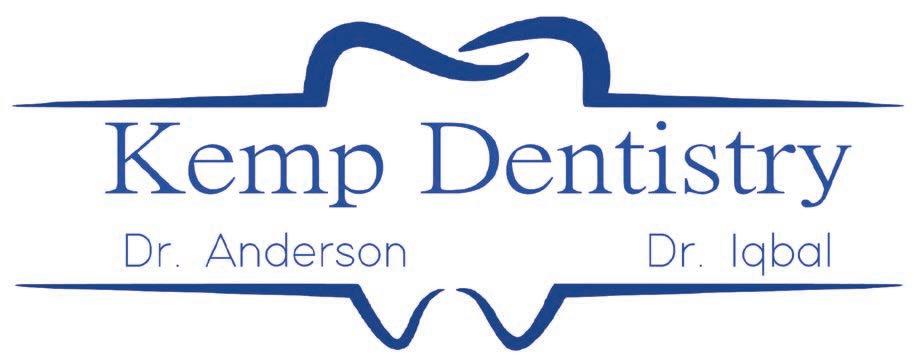



Anyone who has experienced pain understands that it can be debilitating. Pain can make it challenging to manage everyday tasks and can affect relationships and physical and mental health in many ways. Pain medications were once the norm, but with the rise of the opioid epidemic, it may be wise to take a different approach to pain treatment.
Statistics from the Centers for Disease Control and Prevention, the Agency for Healthcare Research and Quality and the United States Department of Health and Human Services reveal that as many as one in five people received prescription opioids long-term for noncancer pain in primary care settings in 2016. While opioid use for pain does not always lead to abuse of these medications, opioid addiction has become a widespread problem across North America. These same agencies report that approximately 1,000 people are treated in emergency departments in the United States each day for misuse of prescription opioids. Between 2016 and 2017, opioid poisoning hospitalization rates went up by 8 percent in Canada, resulting in an average of 17 hospitalizations each day.
Chiropractic care may be one avenue to pursue as a viable alternative to pain medications. While chiropractic manipulations are most often associated with back and neck pain, there are many different benefits some of which may surprise those unfamiliar with chiropractic care for this type of care.

Migraines and headaches: Research shows that spinal manipulation can be an effective way to treat migraines, tension headaches and headaches that begin in the neck. In clinical trials conducted at Mac-
quarie University, 72 percent of migraine sufferers had noticeable or substantial improvement after a period of chiropractic treatment.
Accident injuries: Chiropractors can assess musculoskeletal anomalies caused by motor vehicle accidents as well as slips and falls. Whiplash is a common issue in car crashes, and this may be addressed by a chiropractor.
Anxiety and stress: The fight or flight mechanism that is activated when a person experiences stress and anxiety can take its toll on various parts of the body. Because stress involves nerve impulses, chiropractors may be able to work primarily with the spine where these impulses originate to help release tension and nerve irritation. In addition, adjustments can improve blood circulation, which may help signal the brain to turn off its rally to action response to stressful situations.
Fibromyalgia: Fibromyalgia is marked by widespread musculoskeletal pain in the joints, muscles, tendons, and other soft tissues. It can be combined with temporomandibular joint syndrome, or TMJ, as well as irritable bowel syndrome, among other illnesses. Chiropractors can remove subluxations, which are misalignments of the vertebrae in the spine and joints that lead to pain responses. A Florida State University study found that those with fibromyalgia who combined resistance training with chiropractic treatment two times a week saw improvements in their symptoms.
Chiropractic care may be an asset for pain management, as well as a way to improve overall health.


Medications improve the lives of billions of people across the globe every day. Without access to medication, millions may die while countless others would experience a dramatic decline in their quality of life.

Though there’s no denying the positive effects of medication, the efficacy of herbal supplements and prescription drugs does not mean each are risk-free. Risks may even be compounded when individuals take herbal supplements and prescription medications concurrently. According to the Mayo Clinic, herbal supplements do not always interact well with prescription medications. For example, herbal supplements can interact with medicines utilized to treat issues affected the heart and blood vessels. That includes conditions like high blood pressure, which estimates from the World Health Organization indicate affects nearly 1.3 billion adults between the ages of 30 and 79.
Mixing medications has always been risky, but a growing reliance on herbal medicines has potentially elevated that risk. That’s perhaps due to perceptions of herbal supplements as wholly natural, leading some to conclude that a substance that’s wholly natural cannot jeopardize the human body. However, an analysis published in the British Journal of Clinical


Pharmacology detailed more than a dozen instances of adverse drug reactions affecting individuals who took herbal medicines alongside various prescription medications. The medications taken, some of which were antidepressants, were prescribed to treat various conditions, including HIV, epilepsy and heart disease.
The potential dangers of mixing herbal and prescription medications underscore the need to engage in honest and open discussions with a physician before taking any herbal or prescription medications. Individuals currently taking a prescription medication should consult with their physician before taking any herbal supplements, while those who take herbal medicines and supplements should bring that up with their physicians if they are prescribed a new medication.




The Mayo Clinic notes that a fast heartbeat and changes in blood pressure are two indicators of drug interactions. But many additional side effects can indicate a potentially dangerous or unhealthy interaction is taking place. For example, the U.S. Food and Drug Administration notes that increased dryness or irritation of skin when taking more than one topical acne drug at the same time indicates an unhealthy interaction is taking place.

Illnesses and aging can force families to make challenging decisions regarding the health and wellbeing of people they love. Care facilities, home health aides and other services can help improve quality of life for those people who are no longer well enough - physically or cognitively - to care for themselves. Palliative and hospice care are part of these care offerings.
What is palliative care?
Palliative care is specialized medical services for individuals living with serious illnesses. It is not designed to cure or treat the condition itself, but it is a way to manage symptoms. It is typically used in conjunction with other forms of medicine that are attempting to treat or cure the disease.
What is hospice care?
Hospice is similar to palliative care in that it is geared to enhancing quality of life. Hospice care is for people in the last phases of incurable diseases and is intended to ensure they live as fully and comfortably as possible, according to the American Cancer Society. Unlike palliative care, which accompanies traditional medical care, those who accept hospice care typically cease any other care attempting to cure the illness.
Who can benefit from palliative or hospice care?
The National Institute on Aging says anyone living with a serious illness, such as cancer, dementia, Parkinson’s disease, and heart failure, can appreciate the support palliative care provides. It is helpful at any stage of the illness, and is best started soon after diagnosis.
Hospice care is for those who are in the final stages of their illnesses. Generally, hospice services are
reserved for people who are expected to live another six months or less if their illness continues to run its course.
Are these services permanent?
The good news about palliative care and hospice care is that wishes are completely driven by the patient and his or her family. If the patient is incapable of making medical directives, his or her medical proxy can make changes to care wishes.
Research indicates that many times hospice care is started too late because people think it’s a form of ‘giving up.’ However, anyone in hospice care can resume active care if they or their caregivers choose to do so.

What can palliative and hospice care resolve?
The Mayo Clinic says that palliative and hospice care can improve symptoms such as pain, nausea or vomiting, anxiety, depression, constipation, difficulty breathing, fatigue, and trouble sleeping, among others.
Hospice care also can include spiritual and bereavement care. Hospice teams typically follow up with members of the immediate family to offer them counseling or other services.
Who is in charge?
Patients and their families decide what they want out of these care measures. Palliative care teams are separate from the patient’s medical care team that’s managing their treatment. Hospice care teams coordinate the majority of care for the patient and communicate with the patient’s medical care team.
Hospice and palliative care are considerations for people with serious conditions.











Improving one’s overall health and maintaining that health over the long haul can have a profound impact on quality of life. For example, the Harvard Medical School notes that regular exercise can slow the natural decline in physical performance that occurs as people age. That means routine exercise can serve as something like a fountain of youth that allows people to keep their cardiovascular fitness, metabolism and muscle function on par with their younger counterparts.
When attempting to improve long-term health, it’s important that people emphasize mental health as much as they do their physical health. The Anxiety & Depression Association of America notes the importance and effectiveness of preventive efforts in relation to depression and anxiety. In regard to mental health, prevention efforts can function in much the same way that exercise serves physical health. Routine exercise helps people to maintain healthy weights, reducing their risk for various conditions and diseases. Preventive efforts designed to improve mental health can significantly reduce a person’s risk for anxiety and depression.
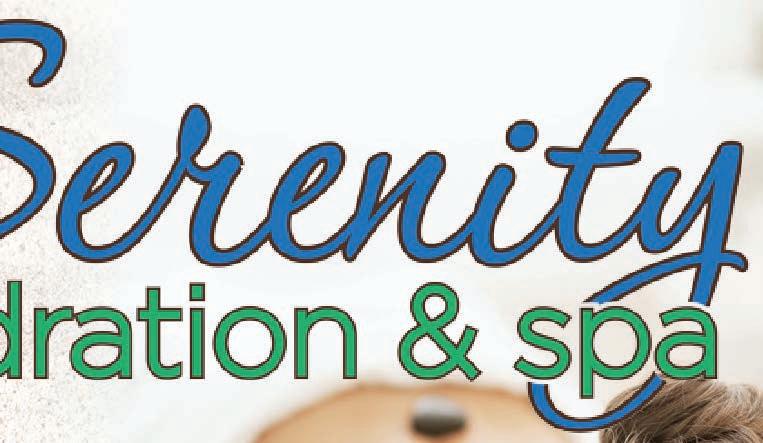
Various techniques and strategies can be utilized to promote mental health, and these three are simple and highly effective.
1. Get enough sleep.
According to the Primary Care Collaborative, a not-for-profit member organization dedicated to advancing an effective and efficient health system, sleep and mental health are intimately related. Sleep loss can contribute to emotional instability. The amygdala is the part of the brain responsible for humans’


emotional responses. When an individual does not get enough sleep, his or her amygdala goes into overdrive, leading to more intense emotional reactions. The prefrontal cortex is another part of the brain that needs sufficient sleep to function properly. Without it, the prefrontal cortex, which is integral to impulse control, cannot function properly. Adults can speak with their physicians about how much sleep they should be getting each night. Those needs change as individuals age.
2. Eat a balanced diet.

A balanced, healthy diet doesn’t just benefit the waistline. According to the ADAA, a balanced diet that includes protein, healthy non-saturated fats, fiber, and some simple carbohydrates can reduce the likelihood that mental health issues like fatigue, difficulty concentrating and irritability will arise during the day.
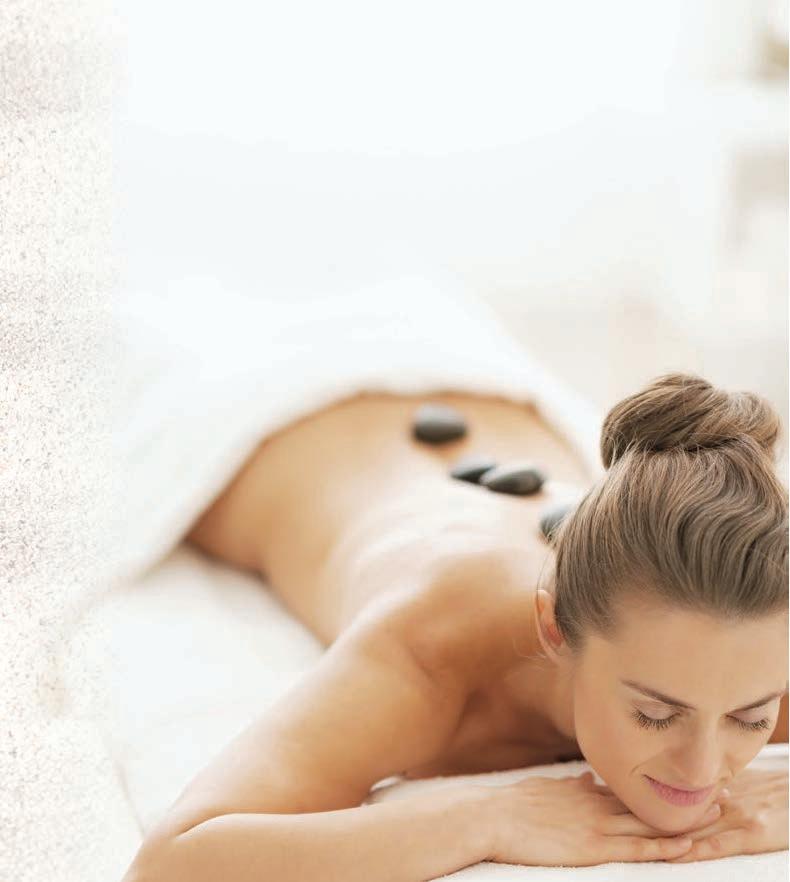
3. Volunteer in your community.
A 2020 study published in the Journal of Happiness Studies found that people who volunteered in the past were more satisfied with their lives and rated their overall health as much better than people who didn’t volunteer. Perhaps the most noteworthy finding in the study was that people who began volunteering with lower levels of well-being tended to get the biggest boost from volunteering. Volunteering provides opportunities to socialize, which can help ward off the loneliness that can sometimes contribute to anxiety and depression.
Mental health is important, and protecting it should be part of everyone’s health care regimen.

Cognitive health is not something to take for granted. Although a certain level of memory loss can be expected as people age, when the ability to clearly think, learn and remember is compromised, those changes can affect an individual’s ability to perform daily activities and should serve as a cause for concern.


Brain health should be a priority for everyone. The National Institute on Aging says brain health is an umbrella term that encompasses a host of factors, including:
• cognitive health, which is how well you think, learn and remember

• motor function, or how you make and control movements
• tactile function, which is how you feel sensations
• emotional function, or how emotions are interpreted and responded to.
Individuals can safeguard brain health - particularly cognitive health - by taking these steps.
Working with doctors, individuals can put their health first. This includes getting routine screenings, managing chronic health problems, limiting or avoiding alcohol and nicotine products, and getting the recommended amount of sleep each night.

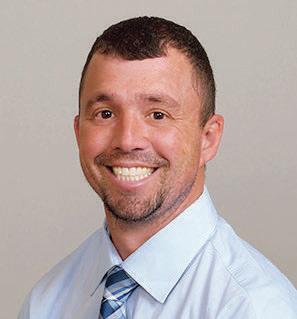
All chronic conditions cause long-term repercussions, but the NIA indicates that observational studies show having high blood pressure in mid-life increases the risk of cognitive decline later in life. Lowering blood pressure lowers the risk for mild cognitive impairment and possibly dementia.
Harvard Medical School says nurturing social contacts, engaging in stimulating mental activities like reading and doing puzzles, seeing new places, and learning new things can help keep the brain in top form.
Stress can take its toll on the body, and there is reason to believe that it may adversely affect cognitive health as well. Make every stride to reduce stress, whether that involves taking vacations, meditating, laughing with friends and family, or engaging in relaxing activities that relieve stress.

Get enough vitamin D
Vitamin D is linked to a host health benefits, including its potential to promote a healthy brain. Individuals can get more time outdoors to get vitamin D naturally from the sun and eat foods rich in vitamin D. If doctors find that vitamin D levels are exceptionally low, supplementation can help.
The opportunity to live independently is a goal for many people as they plan for retirement. While there’s much people can do to plan for financial independence in their golden years, health issues may arise that can make it hard for aging adults to get through the day without a little help.
Palliative care and hospice are sometimes mistaken as the same thing, even though they’re quite different. Learning about each option can help adults identify which option is best for them should they one day require daily assistance.

Palliative care may be available at any time for individuals with serious and potentially life-threatening conditions. According to Healthline, palliative care is focused on improving the overall wellness of individuals with serious illnesses, such as Alzheimer’s disease, cancer, COPD, and other chronic illnesses. Since it is based on individuals’ needs, palliative care can differ from one person to the next.
WebMD says a palliative care program frequently aims to ease pain and help with other problems, including improving comfort. It is used in addition to other treatments. Palliative care also can help patients and their families if an illnesss makes it more difficult to get around, leads to depression or adversely affects the family, including caregivers.
The National Institute on Aging notes that hospice care may be recommended when it is no longer possible to cure a serious illness or when a patient opts out of certain treatments. Like palliative care, hospice provides comprehensive comfort care and family support. However, attempts to cure the person’s illness are stopped in hospice. Hospice is typically recommended when a person with a terminal illness has around six months or less to live. When people hear ‘going into hospice’ they may think this means entering a facility. However, hospice can take place in many different settings, including at home, in a nursing home, in a hospital, or even a facility that specializes in hospice care.
Both palliative and hospice care bring together a team of health care professionals with special skills. This team can include doctors, nurses, social workers, therapists, spiritual advisors, and trained volunteers. Everyone works together to address patients’ emotional, medical and spiritual needs.
The main difference between palliative and hospice care is when each is offered to a patient. Palliative care can be available at any time, regardless of illness stage, prognosis or life expectancy. Hospice care is only available when an illness is no longer responding to treatment. It is sometimes known as end-of-life care. However, a person can come out of hospice care should his or her condition begin to improve.
Patients and their families can discuss the options of palliative and hospice care with their health care teams. While these types of care have become much more accessible in recent years, they may not be available everywhere. It also pays to ask questions about health insurance coverage to determine if the costs of palliative or hospice care will be covered by a provider. A long-term care policy also may be an option to cover palliative services.
Palliative care and hospice are sometimes mistaken as the same thing, even though they’re quite different.
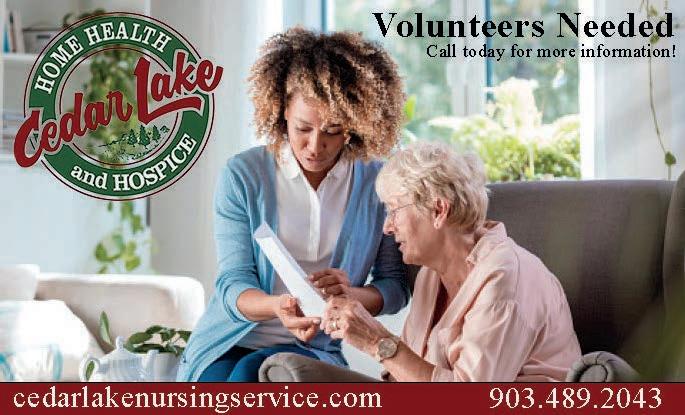

Caregivers are called on to step in for any number of reasons. Some serve as companions to the elderly, while others assist those with debilitating diseases like cancer. While many caregivers are professionals hired for their services, a good number of caregivers are informal Ñ meaning they are family members or friends assisting loved ones.
Even though they are trying to help others, caregivers often must confront a form of stress known as caregiver burnout. The Cleveland Clinic states this stress is marked physical, emotional and mental exhaustion that occurs in caregivers. This burnout may lead to fatigue, anxiety and depression.

While there may not be a way to completely eliminate all caregiving stress, there are some ways to prevent burnout. Utilizing various resources can be a start. Here’s a look at some available caregiver resources.
• Trusted friend: Find someone you trust with whom you can discuss your feelings, including any frustration you may feel. This can be a neighbor or a coworker with whom you feel comfortable sharing personal details.
• Support groups: Support groups can provide safe spaces to vent with others who are in the same boat. Houses of worship may host support groups, or you can find out about meetings through hospitals or from personal doctors. The National Family Caregiver Support Program was established in 2000 and provides grants to states and territories to fund a range of support that assists family and informal caregivers to care
for their loved ones at home for as long as possible. Other groups include Caregiver Action Network and Family Caregiver Alliance.
• Respite care services: Respite care services provide temporary breaks for caregivers by enabling the sick, elderly or injured to stay in care facilities for anywhere from a couple of hours to a few days. Some respite care services will provide short-term, in-home care as well.


• Professional therapist: Many therapists are trained to counsel individuals who have particular issues. Some may specialize in grief or even caregiver needs. Utilize their services if speaking with a confidante is not enough.
Caregivers often put the needs of others before their own. But they may need a little help along the way, which is where caregiver resources can come into play.

People who see their doctors for routine wellness exams typically undergo certain blood tests during that process.

In addition to a complete blood count (CBC), doctors frequently request lipid panels that indicate cholesterol and triglyceride levels.
While cholesterol is a familiar term, triglycerides may be more of a mystery to the average Joe.
According to the Cleveland Clinic, triglycerides are lipids (waxy fats) that provide energy to the body. The body produces triglycerides and also gets them through food. Triglycerides are actual fats, while cholesterol is a waxy, odorless substance made by the liver. Since cholesterol cannot mix or dissolve in the blood, the liver puts cholesterol together with triglycerides to move the fatty mixture (lipoproteins) throughout the body.
When a person eats, any extra calories not used for energy are converted into triglycerides, which are stored in fat cells. Later, hormones release these triglycerides as energy between meals. Individuals who regularly eat more calories than they burn, particularly from high-carbohydrate foods, may have high triglycerides.
According to the Mayo Clinic, high triglyceride levels may contribute to a hardening or thickening of the arteries, which is a condition known as arteriosclerosis.
For healthy adults, normal triglyceride levels should be under 150 mg/dL. Values of 151 to 200 mg/dL are considered borderline high, and anything over 201 is high or very high. In addition to arteriosclerosis, high triglyceride levels can raise the risk of cardiovascular disease and pancreatitis.
Overeating, having a family history of high
cholesterol, drinking alcohol to excess, being overweight or obese, and having unmanaged diabetes can contribute to high cholesterol levels.
Smoking, the presence of thyroid disease and certain medications, like diuretics and hormones, also may raise the risk of developing high triglyceride levels.
Lifestyle changes similar to those recommended to manage high cholesterol can help people lower their triglyceride levels. These include eating a nutritious diet, doing aerobic exercises regularly and maintaining a moderate weight.
Individuals should avoid simple carbohydrates, such as those made with white flour, fructose, trans fats, and hydrogenated oils or fats.
Low triglyceride levels are not typically a cause for concern. But in these instances malnutrition or malabsorption could be the culprit.
Individuals should undergo routine health screenings to determine if high triglycerides are part of their lipid panels.


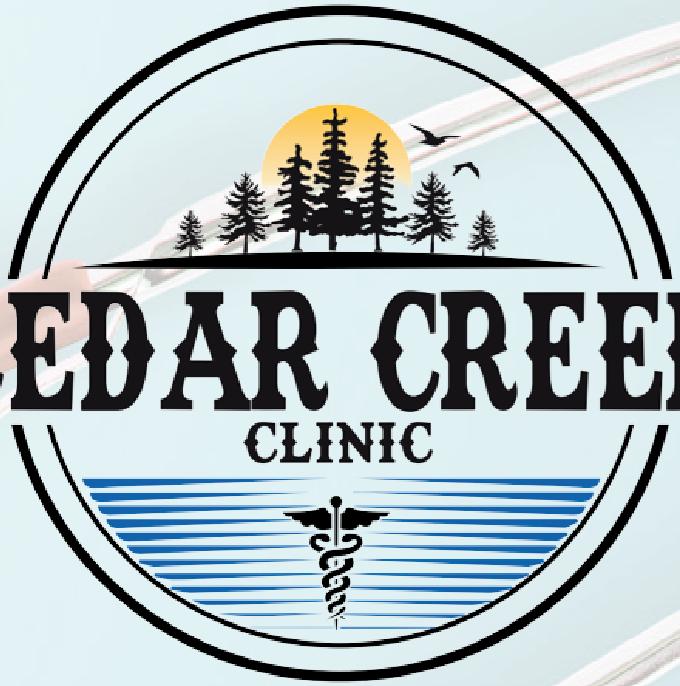







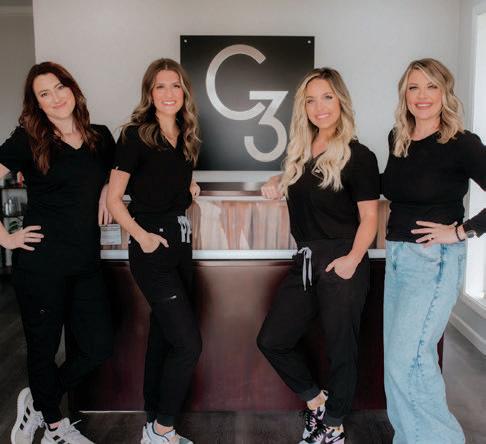
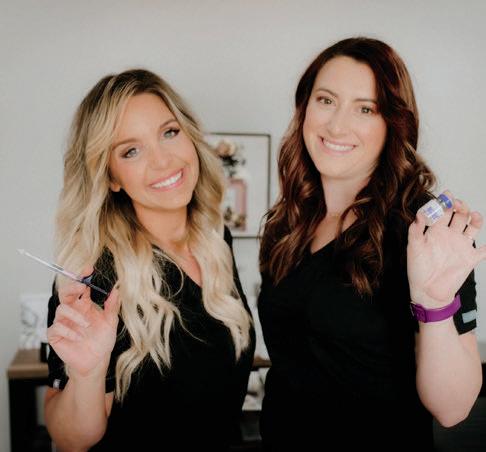

As summer transitions to fall, many changes take place. In addition to changing landscapes, men and women may need to adapt their health and wellness habits to ensure that they stay healthy and happy. Part of that daily regimen includes how to care for skin as the seasons change.
Just as skin requires certain protection from the sun and heat in the summer, skin has special needs in the fall and winter. Fall and winter are often characterized by cold, dry weather, which can make these times of year particularly challenging for people with dry or sensitive skin. These tips can help people maintain their skin’s appearance and health.
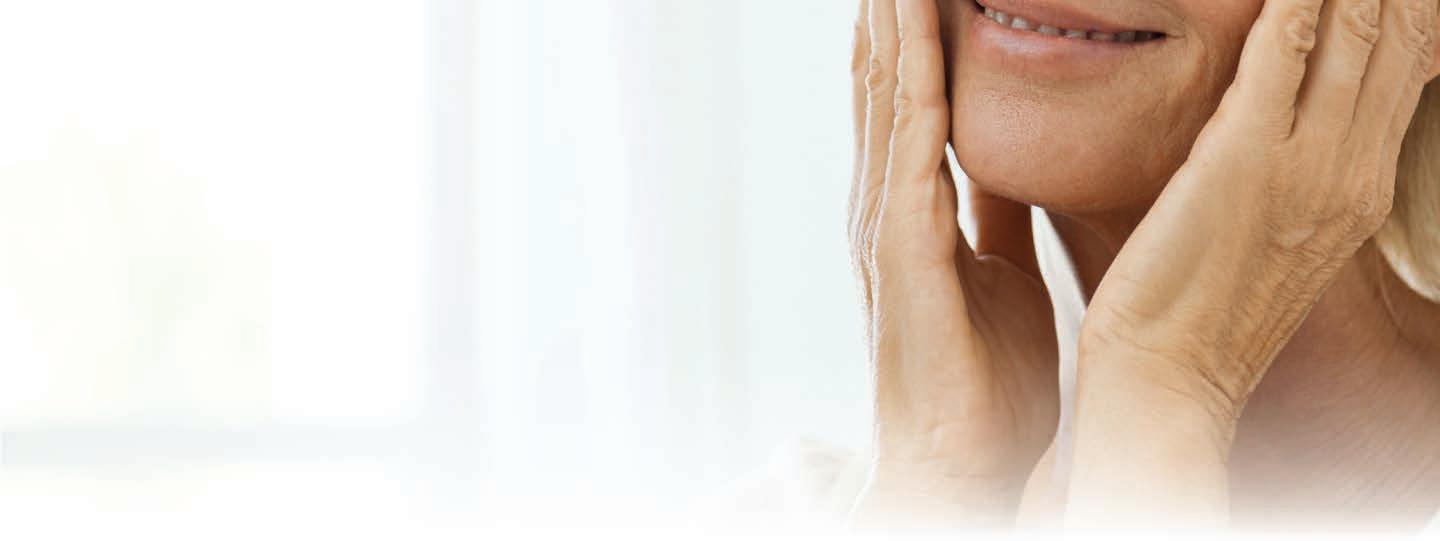


• Don’t skip the sunscreen. Sunscreen is not a summer-only requirement. UV rays can damage the skin any time of year, even if the rays are not as strong as during the summer. UV radiation accelerates and increases the risk of skin cancer. It also can lead to premature aging. Utilize a sunscreen with an SPF of 30 or higher every day.
• Invest in a humidifier. Dry, cold temperatures can rob the skin of essential moisture, even indoors. Dermatologists suggest using a humidifier
at home to boost the amount of moisture in the air. This can make skin more comfortable and can have other health benefits as well.
• Skip hot showers. It can be tempting to sit under a hot stream of water to warm up. However, hot water dries out the skin by depleting its stores of natural oils, says Glacier Med Spa. Take warm showers instead and don’t stay in for longer than 15 minutes.
• Limit exfoliation. While exfoliation can remove dead skin, overdoing it can make already sensitive skin more raw. Increase the time between exfoliation treatments. Consult with a dermatologist for more advice about dealing with flaky skin.
• Don’t forget your lips. Using a thicker moisturizer on the body and face can help add and retain moisture. But pay attention to your lips and eyes as well. Something as simple as petroleum jelly on the lips can help prevent chapping. Invest in a quality eye cream to help the delicate skin around the eyes as well.
Modifications must be made to skincare routines in anticipation of seasonal weather changes.

Maintaining physical and mental health often requires a multi-faceted approach. Eating well, exercising and reducing stress are part of a healthy regimen, but those are not the only components of a healthy lifestyle.
Hobbies can have a positive effect on overall health. Hobbies can seem like ways to simply pass the time or alleviate boredom. But a deeper exploration could shed light on just how healthy hobbies can be. In fact, it is essential to carve out time for hobbies because they can be so beneficial.


According to a study published in Aging Clinical and Experimental Research, participation in leisure activities positively influences self-perceived well-being and depressive symptoms. ‘The blue zone’ refers to the areas of the world that have the longest-living people on the planet, which include Okinawa, Japan; Sardinia, Italy; and Ikaria, Greece, among others. Participation in activities that bring out a creative side leads to an increased sense of wellbeing that is good for long-term health. They also can reduce cortisol levels. Cortisol is known as the stress hormone, and it can negatively affect energy, mood and sleep.
While most leisure activities regularly engaged in can have positive effects on health, those that focus on a combination of physical and mental stimulation are most beneficial. Women looking to change their daily routines may want to focus on these healthboosting hobbies.
• Dancing: Laugh, sweat and learn some footwork in
-
a dance class. It can make exercise fun for those who find traditional exercise does not keep their attention.

• Kayaking: There’s something serene about being on the water away from the hustle of life on land. Kayaking strengthens the body, but the calm of taking in the water and scenery nourishes the mind. Experts agree that outdoor hobbies add another benefit since sunlight helps the body release neuroreceptors that trigger more positive thoughts.
• Gardening: Gardening is physical, requires planning, involves spending time outdoors, and yields tangible results through thriving plants. These are all factors that promote good health.
• Fostering animals: Fostering animals offers them an opportunity to spend time in domestic settings before being adopted by permanent owners. For the foster person, having a dog involves going out on walks and play sessions in the backyard. A sense of purpose comes from helping out needy animals, and this hobby also taps into physical wellness.
• Volunteering: Being a presence in your community can foster social engagement and boost emotional health. It also can keep you physically active.
Various hobbies can be good for the mind and body, which makes it worth anyone’s effort to make more time for recreation and leisure.
v Are you searching for a guiding light to navigate through life's challenges?
v Are past experiences holding you back from living your best life?
v Struggling with anxiety that seems to control your every move?

v Dealing with trauma or grief and looking for a way to heal & move on?
v Craving a deep sense of self-esteem and unshakable confidence?
What Transformational Coaching Offers:
Tailored Guidance, Anxiety Allieviation, Trauma & PTSD Healing, Grief Support, Self-Esteem Boost, Confidence Cultivation

Routine health checkups are a key part of staying healthy. Older adults may feel like they’re always visiting one doctor or another. But what is an acceptable frequency for doctor appointments?
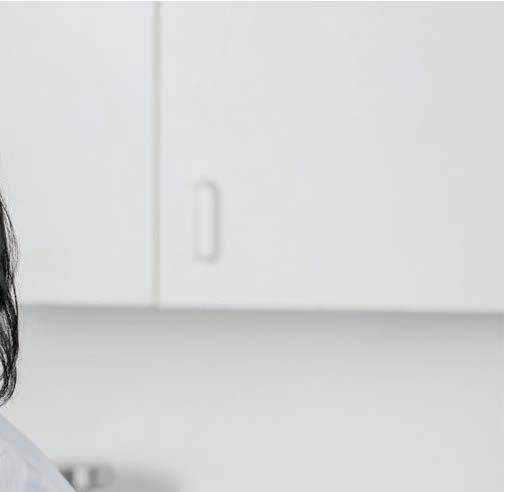

The answer isn’t always so cut and dry, and many health professionals have mixed feelings even among themselves over the magic number. The Centers for Disease Control and Prevention recommends adults over the age of 65 visit the doctor more than twice as often as 18- to 44-yearolds. According to Paul Takahashi, a physician at the Mayo Clinic in Rochester, Minn., adults should see their primary care physicians at least once a year to make sure diseases are being properly managed and to stay current on preventative screenings.
Visiting the doctor more frequently does not necessarily add up to better health, and it actually can do the opposite. Dr. Peter Abadir, an associate professor of medicine at the Johns Hopkins University School of Medicine, says frequent visits to health facilties where sick people congregate puts one at a higher risk of illness or infection. Visiting the doctor only when necessary is one way to avoid risky exposure.
Doctor visit frequency is not a one-size-fits-all answer. A yearly physical or checkup is a given, even for people who are healthy. People with a family history of certain conditions, like sleep disorders, cancer, high blood pressure, and other conditions, may need to see a doctor more frequently



than those with no such histories. In addition, patients may need referrals to certain specialists who work together to provide an overall health plan. That can increase the number of appointments and shorten the intervals between them. Johnson Memorial Health offers some statistics.
• People visit the doctor four times a year on average.
• Studies show that poor or uninsured people prolong the time between doctor’s visits.
• Individuals with high blood pressure may need to see the doctor four times a year to ensure medications are working properly.

• Patients on dialysis see the doctor several times a week.
Dr. Jennifer Caudle, a family physician and assistant professor at Rowan University School of Osteopathic Medicine in Stratford, NJ, says too often people visit the doctor only when they are really sick. That works to their disadvantage because the appointment will focus only on treating the illness instead of addressing other preventative care and screenings. Balance is necessary in regard to health care.
Patients can work together with their doctors to develop screening schedules that are customized to their particular profiles. These schedules can be modified as health history information changes or as patients age. Doctors can dial back or increase health visits as needed.
...adults should see their primary care physicians at least once a year...
Pets rely on their owners to look out for their physical well-being. Many serious health issues can afflict pets, and parasites are a common cause of illness and discomfort.


Of all the parasitic worms dogs, cats and other companion animals may acquire, heartworms may be the most concerning. Heartworm disease can result in lung and heart failure, other organ damage, and potentially death. Heartworm disease is caused by a blood-borne parasite known as Dirofilariaimmitis, offers the U.S. Food & Drug Administration. It is spread through the bite of a mosquito. Dogs are often the host of choice. The parasites infect the dog, mature into adults, mate and produce offspring all while living inside the animal. Cats are atypical hosts for heartworms, and most worms in cats do not survive the adult stage.
While heartworm infection has been reported in all 50 states, it is most common along the Atlantic and Gulf coasts. Heartworms also can occur in the warmer regions of Canada where summer temperatures are high enough for the worm larvae to survive inside carrier mosquitoes. Once inside a new host, it takes approximately six months for the larvae to develop into sexually mature adult heartworms, advises The


American Heartworm Society.
Once mature, heartworms can survive five to seven years in dogs and up to two to three years in cats. Each mosquito season can increase the number of worms in infected pets.

Prevention is key to ensuring the health of a pet. Adult heartworms can infect the heart, pulmonary artery and adjacent large blood vessels. A blood test can reveal whether a pet is affected by heartworms, as early infection may not yield noticeable symptoms. Apart from keeping pets away from mosquito-heavy areas, pet owners will find that annual heartworm testing as well as monthly prevention medications can provide the protection needed to keep animals safe. Heartworm preventives must be purchased from a veterinarian or with a prescription through a pet pharmacy in the United States. Check requirements for those living in Canada.
The FDA warns that the treatment for heartworm disease is not easy on the dog and it is costly. Treatment can be potentially toxic to the dog s body and can cause serious complications, such as the development of life-threatening blood clots in the dogs lungs. Preventive medicines can reduce pets risk of developing heartworm.


The human body is a marvel. When working correctly, the body automatically performs scores of metabolic functions. Individuals can facilitate the performance of those functions in various ways.
Careful consideration of what they put into their bodies is one way individuals can make things easier on their bodies. It is vital to supply the body with the nutrients it needs. This includes the essentials: A, C, D, E, K, and the eight B vitamins.
• Vitamin A: This vitamin helps ensure the health of the skin, corneas, lining of the urinary tract, lungs, and intestines. Vitamin A also helps protect against infection. It also is important for vision, as it improves vision in dim light.
• Vitamin C: Vitamin C, also known as ascorbic acid, plays a vital role in immune system function, helping to protect cells from free radicals. Since the body cannot store vitamin C, it needs to be consumed daily.
• Vitamin D: Vitamin D assists in calcium and phosphorous absorption, which helps to keep bones and teeth strong. The body can produce vitamin D naturally by spending time in sunlight. That is why it’s often called Òthe sunshine vitamin.Ó
• Vitamin E: This vitamin maintains muscles and red blood cells. It also protects fatty acids.
• Vitamin K: Vitamin K is necessary for blood to clot and helps to keep bones and other tissues in the body healthy.
• Thiamine (B1): B1 is needed for metabolism and for nerve and heart function.
• Riboflavin (B2): Another important nutrient for
metabolizing foods, B2 helps maintain healthy mucus membranes, such as those in the mouth and nose.
• Niacin (B3): This vitamin helps to release energy from food and keeps the nervous system healthy.
• Pantothenic Acid (B5): B5 is another vitamin that aids energy metabolism. It also plays a role in normalizing blood sugar levels.
• Pyridoxine (B6): People rely on B6 to metabolize food energy. It also has a role in proper nerve function and helps in the creation of hemoglobin, which carries oxygen around through red blood cells.
• Biotin (B7): This is only needed in small amounts to make fatty acids. .
• Folate (B9): Folate is very important for healthy red blood cells. Folate also helps to prevent birth defects, which is why it is recommended as a prenatal vitamin. The manufactured form of folate is called folic acid.
• Cobalamin (B12): B12 is needed to make red blood cells, DNA, RNA, and myelin for nerve fibers. It is preferable to obtain vitamins through healthy foods. If and when foods are inadequate, supplementation might be recommended.
Certain vitamins are fat-soluble, which means they are stored in the body’s fat and used slowly over time, according to WebMD. Others are water-soluble, so they are not stored and need to be replenished frequently. Individuals should speak to their doctors and nutritionists about any vitamin deficiencies they may have and how to combat them safely.




















